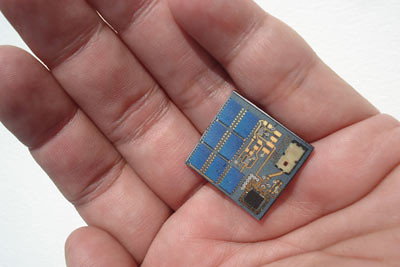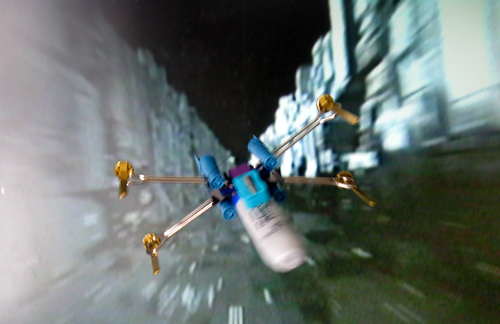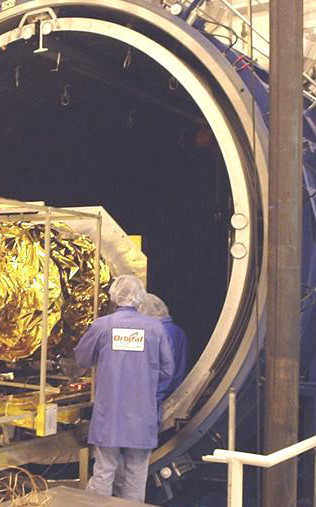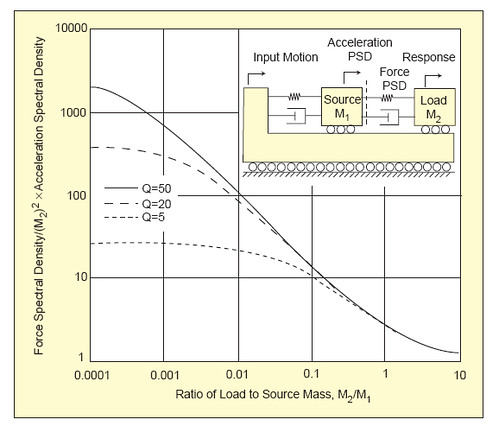Import-Export bank provides financing allowing Inmarsat to purchase Boeing satellites.
[SatNews – 05/14/2011]

At Global Space and Satellite Forum in Abu Dhabi, a call for an international space traffic management body.
[Gulf News – 05/14/2011]
Smart Communications lends Smart Link $-190 satellite phones and provides airtime to keep group in touch during 7-day trek through deep forest in Northern Sierra Madre Natural Park in the Phillipines.
[Phillipine Star – 05/14/2011]
Thaicom sees IPStar bandwidth business booming in first quarter.
[Satellite Today – 05/13/2011]
Astrotech wins $16.2M contract to fabricate, install, and test satellite Ground Support Equipment for U.S. government.
[SatNews – 05/13/2011]
Congressman Mike Turner successfully includes language in National Defense Authorization Act requiring the Secretary of Defense to notify Congress in case of widespread interference with military’s use of GPS satellites.
[POB online – 05/13/2011]
Integral Systems chosen by SES to provide global geolocation services to help protect its global fleet of satellites from effects of radio frequency interference.
[SatNews – 05/13/2011]
Second-Generation Orbcomm satellites delayed until late 2011.
[Space News – 05/13/2011]
MDA selected by Thales Alenia Space to provide 486 high-performance Ka-band cross link and feeder link antennas for Iridium NEXT satellites.
[SatNews – 05/13/2011]
C-COM Satellite Systems receives its largest order in history for its iNetVu mobile satellite antenna systems from Telemann Communications Company, a reseller in Japan.
[TechZone360 – 05/13/2011]
National Broadband Network of Australia reaches agreement with Optus to provide Internet Satellite Services as part of its rollout.
[Broadband Expert – 05/13/2011]
Lockheed Martin wins $105M WIN-T contract to deliver on-the-move broadband networking capability using satellite and radio links.
[Satellite Spotlight – 05/12/2011]
Arianespace begins initial build-up at French Guiana Spaceport for its fourth heavy-lift mission of 2011, to launch BSAT-3c/JCSAT-110R and ASTRA 1N.
[SatNews – 05/12/2011]
Guardian Mobility intends to acquire Alakai Technologies in order to incorporate its data monitoring technology into Guardian’s open platform satellite communications and data management systems.
[Satellite Spotlight – 05/12/2011]

Japan Aerospace Exploration Agency decides to send halt command to DAICHI infrared earth observation satellite after three weeks of unsuccessful attempts to communicate with it.
[SatNews – 05/12/2011]
Vizada adds VSAT capability to Universal Card prepaid voice service.
[Satellite Today – 05/12/2011]
iDirect VSAT platform chosen for Iridium Next ground-control upgrade.
[Satellite Today – 05/12/2011]
NASA’s Dawn spacecraft obtains first image of giant asteroid Vesta.
[SatNews – 05/12/2011]
Northrop Grumman and Applied Minds announce success of recent launch and orbit of a Mayflower test microsatellite.
[SatNews – 05/12/5011]
Israel’s Defense Ministry to invest millions in upgrading country’s space communication capabilities.
[Space News – 05/11/2011]
Florida’s governor and legislators commit more than $43M for growth of space industry in Florida.
[SatNews – 05/11/2011]
Northrop Grumman wins $372M Air Force contract to provide satellite antenna system for B-2 stealth bomber that will help it send and receive information up to 200 times faster than now.
[Business Week – 05/11/2011]
Pau Pyrenees in southern France becomes Europe’s first airport to use new EGNOS Safety-of-Life Service to guide aircraft in for landing using only this space-based navigation signal.
[SatNews – 05/11/2011]
Afcom Satellite Network deploys first dual mode Satellite/TETRA communications system for emergency response vehicle in Niger Delta.
[Business Wire – 05/11/2011]
Hughes deploys HX System broadband satellite networks for Microcom in Democratic Republic of the Congo.
[Satellite Today – 05/11/2011]
Russian Satellite Communications Company and Eutelsat announce signing of MOU to launch new satellite at 36 degrees East.
[Traders Huddle – 05/10/2011]
Arianespace’s third Ariane 5 mission enters final preparations, readying for May 19 launch of GSAT-8 and ST-2.
[SatNews – 05/10/2011]

Landsat images capture Memphis, Tennessee flooding.
[SatNews – 05/10/2011]
GlobeCast and JIB launch NHK World HD on Eurobird 1.
[Satellite Today – 05/10/2011]
RapidEye works with SST Software to integrate its precision farming maps into SST’s information management products and services.
[SatNews – 05/10/2011]
NewCom International develops Emergency Communications Response Network to provide instant, cost-effective contingency or back-up communications for government and law enforcement personnel.
[SatNews – 05/10/2011]
Sky Italia orders IP video solutions from T-VIPS.
[Satellite Today – 05/10/2011]
Syria blocks satellite phone communications.
[Financial Times (MENA) – 05/09/2011]
United Launch Alliance launches Space-Based Infrared System Satellite into orbit for U.S. Air Force.
[Military Aerospace – 05/09/2011]
Gilat wins Australia NBN satellite contract.
[Satellite Spotlight – 05/09/2011]
Mitec of Montreal sells satellite communications business to Quebec-based provider of microwave components.
[Montreal Gazette – 05/09/2011]
At Global Space and Satellite Forum, UAE’s DubaiSat-1 seen as part of focus on space technology as new common ground for organisations, governments, and individuals in the region and globally.
[AMEinfo – 05/09/2011]
Yahsat’s new satellite, Y1A, reaches orbital position.
[7DAYS – 05/09/2011]
Use of Ka-band along with L-band satellites with 400 narrow beams (planned Alphasat 1-XL by Inmarsat) and use of lighter materials allow very compact, lightweight satellite systems for the warfighter.
[Defense Systems – 05/09/2011]
DigitalGlobe cooperates with two German companies to provide new range of high quality 3D data maps.
[SatNews – 05/09/2011]
MDA signs multi-year contracts to supply oil field monitoring products utilizing advanced RADARSAT-2 surveillance capabilities covering entire Canadian oil field.
[SatNews – 05/09/2011]
U.S.-based Space Adventures offers to equip Soyuz launch vehicle with additional living space for eight-day commercial flights around the moon.
[SatNews – 05/09/2011]
Mercury Computer Systems to provide leading prime contractor with Ensemble and Echotek products for use in high-speed satellite communications system to transfer ISR data from UAVs to ground forces.
[SatNews – 05/09/2011]
Norsat satellite terminals used by U.S. military as part of relief efforts in Japan following earthquake and tsunami.
[SatNews – 05/09/2011]
Arianespace receives “keys” to Soyuz launch complex at Guiana Space Center from the European Space Agency.
[SatNews – 05/08/2011]
Virgin Galactic’s SpaceShipTwo hits another milestone on way to beginning commercial operations in suborbital space.
[Satellite Spotlight – 05/06/2011]
WBMSAT PS satellite communications systems services














